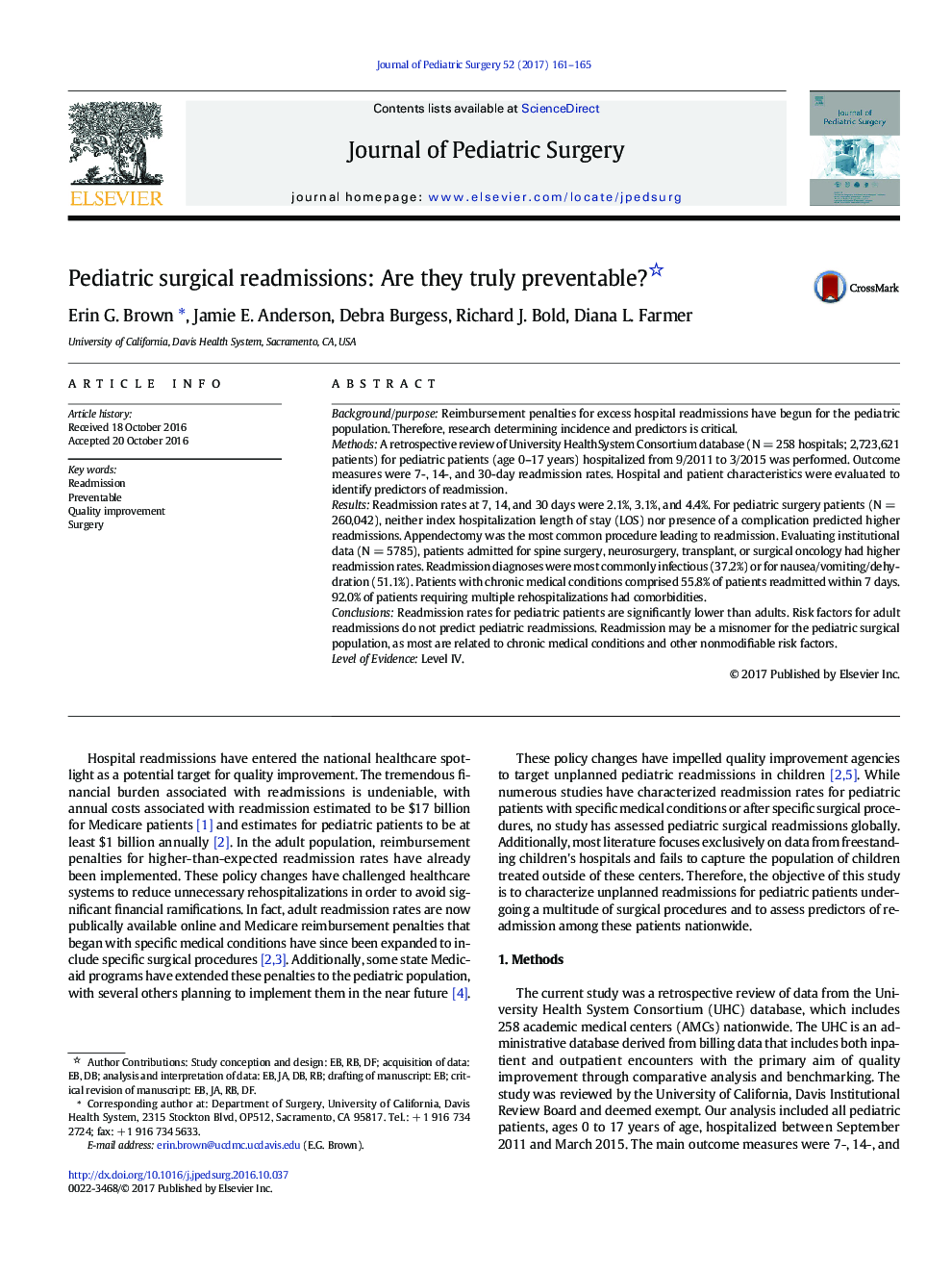| Article ID | Journal | Published Year | Pages | File Type |
|---|---|---|---|---|
| 5718226 | Journal of Pediatric Surgery | 2017 | 5 Pages |
Background/purposeReimbursement penalties for excess hospital readmissions have begun for the pediatric population. Therefore, research determining incidence and predictors is critical.MethodsA retrospective review of University HealthSystem Consortium database (NÂ =Â 258 hospitals; 2,723,621 patients) for pediatric patients (age 0-17Â years) hospitalized from 9/2011 to 3/2015 was performed. Outcome measures were 7-, 14-, and 30-day readmission rates. Hospital and patient characteristics were evaluated to identify predictors of readmission.ResultsReadmission rates at 7, 14, and 30Â days were 2.1%, 3.1%, and 4.4%. For pediatric surgery patients (NÂ =Â 260,042), neither index hospitalization length of stay (LOS) nor presence of a complication predicted higher readmissions. Appendectomy was the most common procedure leading to readmission. Evaluating institutional data (NÂ =Â 5785), patients admitted for spine surgery, neurosurgery, transplant, or surgical oncology had higher readmission rates. Readmission diagnoses were most commonly infectious (37.2%) or for nausea/vomiting/dehydration (51.1%). Patients with chronic medical conditions comprised 55.8% of patients readmitted within 7Â days. 92.0% of patients requiring multiple rehospitalizations had comorbidities.ConclusionsReadmission rates for pediatric patients are significantly lower than adults. Risk factors for adult readmissions do not predict pediatric readmissions. Readmission may be a misnomer for the pediatric surgical population, as most are related to chronic medical conditions and other nonmodifiable risk factors.Level of EvidenceLevel IV.
